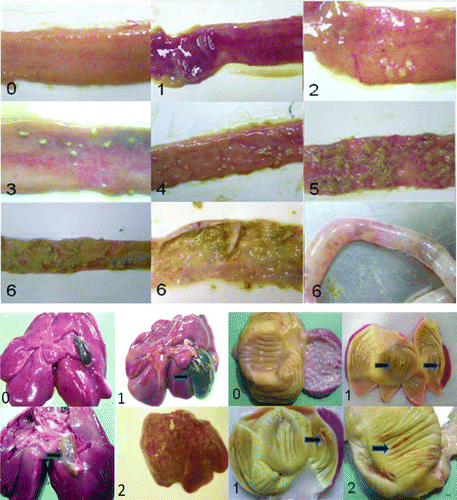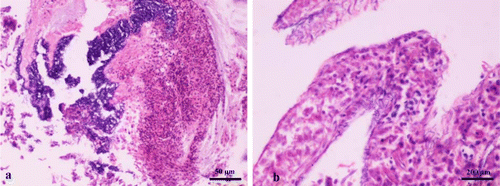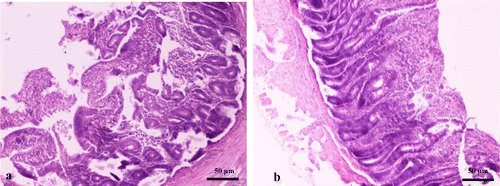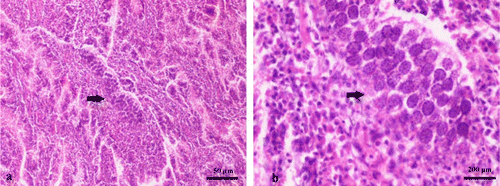Figures & data
Table 1. Experimental design to evaluate the role of an attenuated anticoccidial vaccine on the intestinal ecosystem and on the pathogenesis of experimental necrotic enteritis in broiler chickens.
Figure 1. Gross intestinal, liver and gizzard lesion scoring system in the experiment of anticoccidial vaccination. See Materials and Methods for details of scoring system. Arrows indicate gross lesions.

Table 2. Number of birds with macroscopic necrotic enteritis lesions according to treatment group and sampling day.
Table 3. Gross lesion scores in the intestine, gizzard and liver per treatment group.
Table 4. pH and viscosity values of contents in different parts of the intestinal tract, as well as C. perfringens counts in caeca per treatment group.
Table 5. Overall mean grade of semi-quantitative analysis of C. perfringens counts in the gastrointestinal tract and liver per treatment group.
Figure 2. Jejunum cross-section obtained from a 23-day-old broiler chicken, challenged with C. perfringens and E. maxima. Marked inflammatory reaction was observed, which consisted of infiltration of heterophilic granulocytes and lymphocytes. Moreover, the presence of large numbers of rod-shaped bacteria as clusters (2a) or individually (2b) was detected at the intestinal lumen and mucosa (haematoxylin and eosin).


